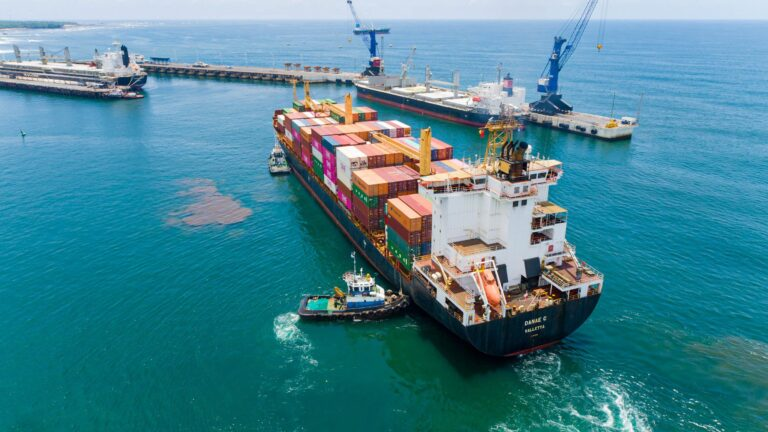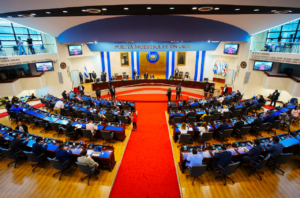
The Economic Commission for Latin America and the Caribbean (ECLAC) updated its growth projections for the region and estimates that El Salvador’s gross domestic product (GDP) will improve its 2024 performance, reaching 2.8% by the end of 2025; while it projects a 2.7% growth for 2026.

This indicates that El Salvador is increasing its growth projections, as predicted by the Banco Central de Reserva (BCR) and the current government. According to statements made by other government departments, El Salvador is taking steps to grow the economy through projects such as tourism, trade, exports, and digital business.

According to ECLAC, Latin America will grow by 2.4% in 2025 and 2.3% in 2026.
The new estimate for 2025 represents an upward revision from the 2.2% forecast in the Economic Survey of Latin America and the Caribbean 2025, published on august 5. This would be the second upward revision since April, when the regional growth forecast was 2.0%. With this update, the regional growth forecast is the same as that presented in december 2024 (2.4%).

In a press release, the United Nations regional organization notes that this projection adjustment reflects a less adverse international environment than predicted in april, but does not alter the underlying diagnosis: the external impetus for growth has slowed, and the region continues to grow at a low pace. To overcome this situation, a more accelerated productive transformation is needed to boost economic growth and productivity, diversify economies, and generate more and better jobs.

Differentiated performance by subregion
The updated projections show heterogeneous performance across subregions. In 2025, South America is expected to grow by 2.9%, higher than the 2.7% forecast in august. This boost is due to the increase in trade between the subregion’s countries and China and the rebound in prices for precious metals and other products from the extractive sectors.

The GDP growth estimate for Central America is expected to remain unchanged from that announced in august and remain at 2.6%. Meanwhile, Mexico’s GDP is expected to grow by 0.6%, an upward revision of 0.3 percentage points compared to the estimate presented in the Economic Survey, reflecting a more favorable outcome in international trade and a better-than-anticipated performance of the United States economy. The English- and Dutch-speaking Caribbean are expected to grow by 4.7%, or 1.9% excluding Guyana, compared to the august estimates of 4.1% and 1.8%, respectively, driven by a more favorable-than-anticipated outcome in tourism.
For 2026, ECLAC maintains its regional projection unchanged at 2.3%. If this estimate materializes, the region would grow at rates of around 2.3% over four years, bringing the average regional GDP growth for the 2017–2026 period to 1.6%. By subregion, growth rates of 2.4% for South America, 3.2% for Central America, 1.3% for Mexico, and 8.2% for the Caribbean (1.7% excluding Guyana) are anticipated for 2026.

An adverse global environment that continues to affect growth prospects
Successive revisions to the projections for 2025 respond to changes in the external conditions facing the region. These include modifications to international trade growth scenarios because of the tariff announcements made by the United States since April of this year; and adjustments to the growth outlook for the region’s main trading partners. While the pace has slowed compared to 2024, it has improved compared to estimates at the beginning of the year. These factors are compounded by global inflation expectations that have declined at a slower pace than expected, affecting interest rate cuts by major central banks and the trajectory of the dollar in international markets.
While the international context has been the main factor this year, ECLAC emphasizes that internal determinants, such as the limited space available for fiscal and monetary policies, productive specialization, and the destination of exports, also explain the differences in the performance of the region’s economies.

Labor Market: Slower dynamism and persistent gaps
The moderate economic performance will be reflected in the lack of dynamism in the labor market. ECLAC projects that the number of employed persons will increase by 1.5% in 2025 and 1.2% in 2026, with a slowdown in formal job creation. Although a slight reduction in informality and gender gaps is expected, both indicators are expected to remain at high levels, highlighting the structural challenges facing the regional labor markets.
Uncertain environment and call to action
ECLAC warns that the international outlook continues to be dominated by downside risks, including the possibility of abrupt corrections in international financial markets, pressures on fiscal sustainability in advanced economies, and potential additional trade disruptions. These tensions could affect the credibility of monetary policies at the world’s major central banks and interest rate levels.
Faced with this scenario, ECLAC urges the countries of the region to preserve macroeconomic stability, strengthen their fiscal and monetary institutions, and promote productive development policies aimed at increasing productivity, diversifying exports, boosting intraregional trade, and fostering sustainable investment. It also reiterates that international cooperation and multilateralism are essential to sustaining the recovery and mitigating the effects of geoeconomic fragmentation.
Next december, ECLAC will publish its traditional report, Preliminary Overview of the Economies of Latin America and the Caribbean 2025, offering a detailed analysis of the year’s results and new perspectives for 2026. The full projections can be found in the press release published at www.cepal.org
Read also:







